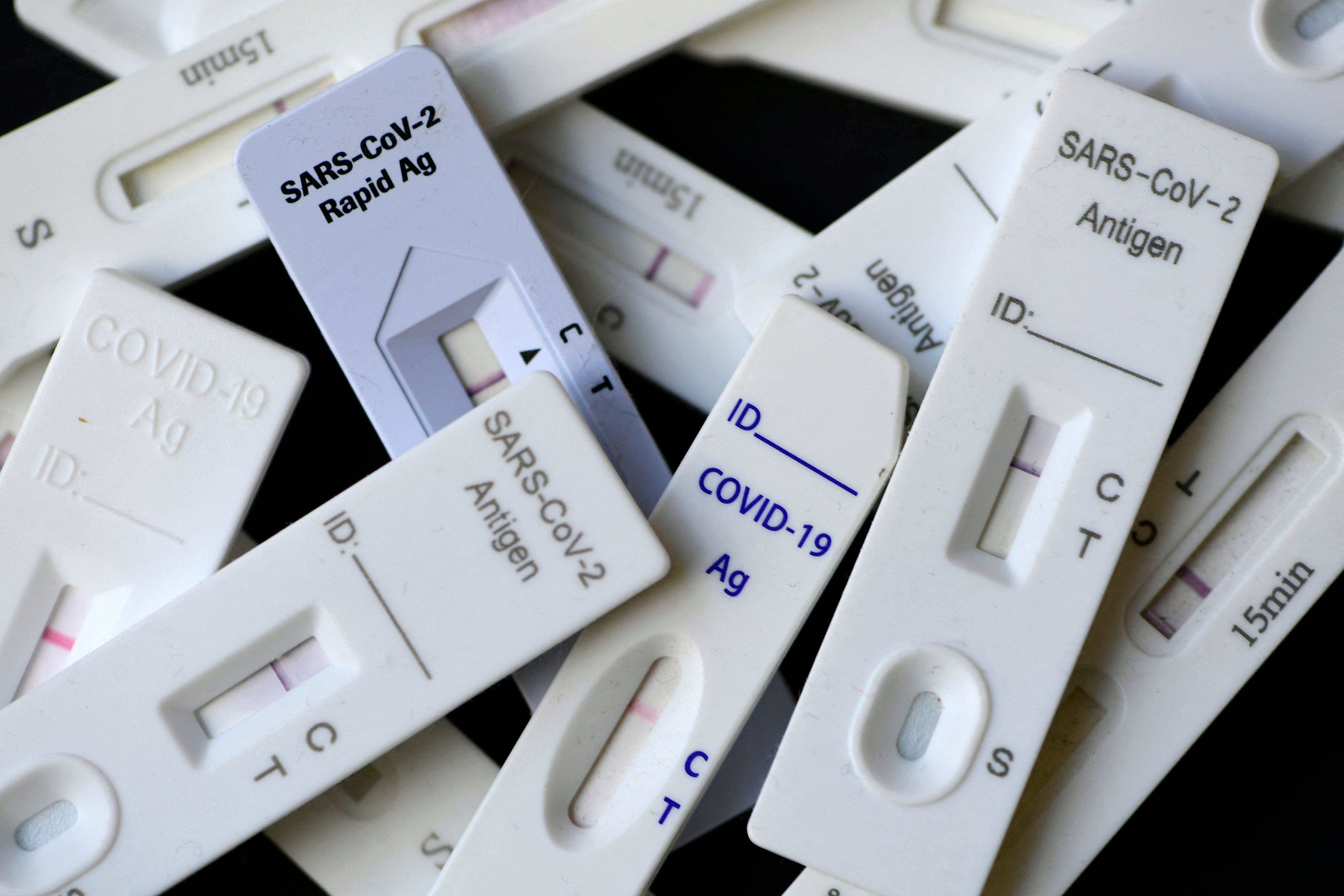The daily business briefing: January 21, 2022
Nine million U.S. workers out sick in COVID wave, the Nasdaq falls deeper into correction territory, and more


1. 9 million stay home from work due to COVID-19
Nearly 9 million Americans had to stay home from work because they or someone they were caring for had COVID-19 in early January, CBS News reported Thursday, citing data collected by the Census Bureau. The surge of workers calling in sick came as the highly contagious Omicron variant drove infections and hospitalizations to record levels. Vital businesses including hospitals and airlines faced staffing shortages in what has been called the "great American sickout." The Census Bureau has been tracking workplace absences since the coronavirus pandemic hit the U.S. two years ago, and the January numbers marked a record of about 6 percent of the workforce staying home. "Time and time again, we see that this economic recovery is tied to the pandemic and public health measures," noted Luke Pardue, an economist at payroll services company Gusto.
2. Nasdaq falls deeper into correction territory
U.S. stock indexes dropped sharply on Thursday, extending a sell-off that has dragged the tech-heavy Nasdaq into correction territory. Wall Street started out the day strong but the rally quickly fizzled, and the Nasdaq closed down by 1.3 percent, putting it nearly 12 percent below the record high it set in November. The Dow Jones Industrial Average and the S&P 500 fell by 0.9 percent and 1.1 percent, respectively. Stock futures fell further early Friday. Futures tied to the Dow were down by 0.2 percent at 6:30 a.m. ET. S&P 500 and Nasdaq futures were down by 0.5 percent and 0.9 percent, respectively. The Nasdaq has been struggling as concerns about rising interest rates have dragged down technology and other growth stocks.
The Week
Escape your echo chamber. Get the facts behind the news, plus analysis from multiple perspectives.

Sign up for The Week's Free Newsletters
From our morning news briefing to a weekly Good News Newsletter, get the best of The Week delivered directly to your inbox.
From our morning news briefing to a weekly Good News Newsletter, get the best of The Week delivered directly to your inbox.
3. Mortgage rates rise to highest in 22 months
Mortgage rates this week jumped to their highest level in 22 months as Treasury yields rose. The rate on the 30-year fixed mortgage rose from 3.45 percent last week to 3.56 percent. Homebuyers rushed to lock in rates before they went any higher, with mortgage applications to purchase homes increasing by 8 percent last week. The changes followed recent increases in Treasury yields as investors factored in expectations that the Federal Reserve would raise its target interest rates faster and farther than previously predicted as the central bank tries to counter high inflation. The 10-year Treasury has risen to its highest point since December 2019.
4. Netflix shares plummet on forecast of slower subscriber growth
Netflix on Thursday predicted that its subscriber growth would slow far more than previously expected in early 2022, sending its shares plunging by nearly 20 percent in after-hours trading. The streaming video giant added more than 8 million subscribers in the holiday quarter, meeting analysts' expectations. That brought its global total to 221.8 million subscribers at the end of 2021. But Netflix said a lack of new original programming in early 2022 and other factors would slow growth to just 2.5 million net new subscribers in the first quarter of 2022. Netflix saw a surge in new subscriptions early in the COVID-19 crisis as people spent more time at home, but growth waned as the pandemic dragged on.
A free daily email with the biggest news stories of the day – and the best features from TheWeek.com
5. Intel to invest $20 billion in Ohio chip-making complex
Intel plans to spend $20 billion on a new chip-making complex in Ohio, The Wall Street Journal and The New York Times reported Friday. The facility, to be built near Columbus, would boost Intel's push to expand its chip-making business. The White House said early Friday that the company's investment would help the United States meet its goal of increasing domestic production of computer chips as a shortage of semiconductors, largely manufactured in Taiwan, hampers production of automobiles and other products. "The COVID-19 pandemic shined a spotlight on the fragility in the global semiconductor supply chain," the White House said.
The Wall Street Journal The New York Times
Harold Maass is a contributing editor at The Week. He has been writing for The Week since the 2001 debut of the U.S. print edition and served as editor of TheWeek.com when it launched in 2008. Harold started his career as a newspaper reporter in South Florida and Haiti. He has previously worked for a variety of news outlets, including The Miami Herald, ABC News and Fox News, and for several years wrote a daily roundup of financial news for The Week and Yahoo Finance.
-
 Political cartoons for January 4
Political cartoons for January 4Cartoons Sunday's political cartoons include a resolution to learn a new language, and new names in Hades and on battleships
-
 The ultimate films of 2025 by genre
The ultimate films of 2025 by genreThe Week Recommends From comedies to thrillers, documentaries to animations, 2025 featured some unforgettable film moments
-
 Political cartoons for January 3
Political cartoons for January 3Cartoons Saturday's political cartoons include citizen journalists, self-reflective AI, and Donald Trump's transparency
-
 Tariffs have American whiskey distillers on the rocks
Tariffs have American whiskey distillers on the rocksIn the Spotlight Jim Beam is the latest brand to feel the pain
-
 TikTok secures deal to remain in US
TikTok secures deal to remain in USSpeed Read ByteDance will form a US version of the popular video-sharing platform
-
 SiriusXM hopes a new Howard Stern deal can turn its fortunes around
SiriusXM hopes a new Howard Stern deal can turn its fortunes aroundThe Explainer The company has been steadily losing subscribers
-
 How will the Warner Bros. bidding war affect the entertainment industry?
How will the Warner Bros. bidding war affect the entertainment industry?Today’s Big Question Both Netflix and Paramount are trying to purchase the company
-
 Texas is trying to become America’s next financial hub
Texas is trying to become America’s next financial hubIn the Spotlight The Lone Star State could soon have three major stock exchanges
-
 US mints final penny after 232-year run
US mints final penny after 232-year runSpeed Read Production of the one-cent coin has ended
-
 How could worsening consumer sentiment affect the economy?
How could worsening consumer sentiment affect the economy?Today’s Big Question Sentiment dropped this month to a near-record low
-
 Musk wins $1 trillion Tesla pay package
Musk wins $1 trillion Tesla pay packageSpeed Read The package would expand his stake in the company to 25%
